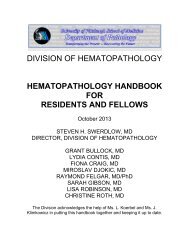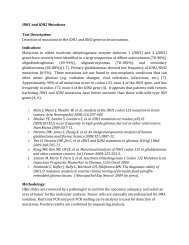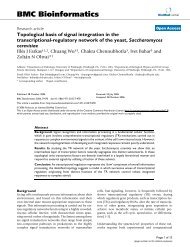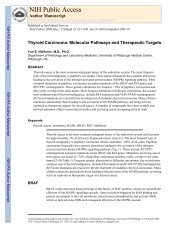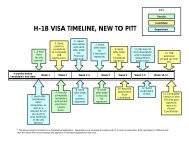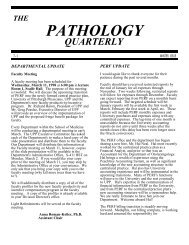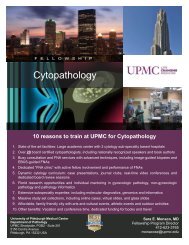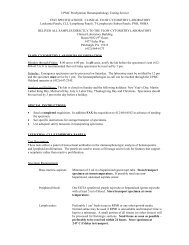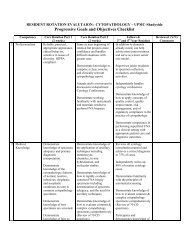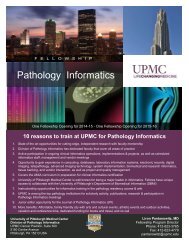Multiple Focal Nodular Hyperplasia of the Liver in - Department of ...
Multiple Focal Nodular Hyperplasia of the Liver in - Department of ...
Multiple Focal Nodular Hyperplasia of the Liver in - Department of ...
Create successful ePaper yourself
Turn your PDF publications into a flip-book with our unique Google optimized e-Paper software.
592 Kim et al.<br />
Journal <strong>of</strong><br />
Gastro<strong>in</strong>test<strong>in</strong>al Surgery<br />
Fig. 1. Arterial phase CT imag<strong>in</strong>g <strong>of</strong> multiple FNH. Arterial phase images through <strong>the</strong> superior (A)<br />
and <strong>in</strong>ferior (B) liver. A, There is a heterogeneous mass <strong>in</strong> <strong>the</strong> left lateral segment that is not hypervascular.<br />
The right lobe <strong>of</strong> <strong>the</strong> liver is atrophic. B, There is an exophytic mass project<strong>in</strong>g <strong>of</strong>f <strong>of</strong> <strong>the</strong> medial segment<br />
<strong>of</strong> <strong>the</strong> left lobe, which is heterogeneous and conta<strong>in</strong>s multiple punctate calcifications.<br />
After <strong>the</strong> patient’s history and results <strong>of</strong> radiologic<br />
imag<strong>in</strong>g studies were reviewed, surgical biopsy was<br />
recommended. The rationale for surgical biopsy was<br />
to obta<strong>in</strong> adequate tissue samples to establish a diagnosis<br />
with absolute certa<strong>in</strong>ty and to allow visual <strong>in</strong>spection<br />
<strong>of</strong> <strong>the</strong> multiple areas <strong>of</strong> <strong>in</strong>volvement.<br />
Fig. 2. Portal venous phase CT images <strong>of</strong> multiple FNH at multiple levels from superior to Inferior. A,<br />
There is a large heterogeneous mass <strong>in</strong> <strong>the</strong> left lateral segment, which is predom<strong>in</strong>antly hypodense to<br />
normal liver. The adjacent medial left and right lobes are diffusely heterogeneous, conta<strong>in</strong><strong>in</strong>g multiple<br />
hypodense lesions that are difficult to <strong>in</strong>dividually discrim<strong>in</strong>ate. B, Portal venous phase at <strong>the</strong> same level<br />
as <strong>in</strong> Fig. 1, A. The exophytic lateral left segment lesion (*) is aga<strong>in</strong> seen, appear<strong>in</strong>g more hypodense<br />
to liver. A smaller hypodense lesion (**) is seen next to <strong>the</strong> gallbladder. Small hyperdense foci (arrowheads)<br />
represent dilated hepatic ve<strong>in</strong>s. C, The <strong>in</strong>ferior portion <strong>of</strong> <strong>the</strong> exophytic left lateral segment lesion is<br />
seen (*). Ano<strong>the</strong>r small left medial hypodense lesion (**) is evident, as are dilated hepatic ve<strong>in</strong>s (arrowhead).<br />
D, The second large exophytic segment IV lesion (*) is evident, appear<strong>in</strong>g more hypodense to liver with<br />
unchanged foci <strong>of</strong> calcification.



